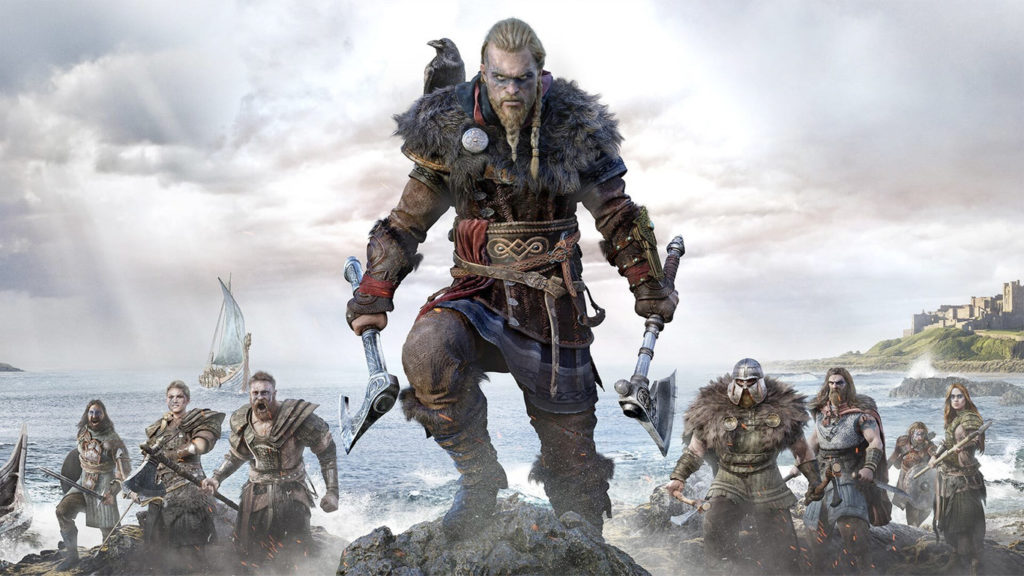Ana Belén Hernández Tornero is a former Master’s in Videogame Art and Visual Design student. Before her time at U-tad, she studied architecture. She wanted to complement her studies 3D modeling, as well as learn about the real-time rendering engine, Unreal Engine, which to her still seems “a very promising field.” This, together with her taste for great titles like Assassin’s Creed, Mass Effect and Bioshock, made her dream of working to build equally incredible worlds. And she has done just that. She works out of Sofía (Bulgaria) for one of the biggest video game companies in the world: Ubisoft. Our former student was recently involved in Assassin’s Creed Valhalla, coming out soon. We spoke with her about art, videogames, and her formative experience.
You’ve been working on Assassin’s Creed Valhalla, can you tell us about your role is in this production?
I’ve worked mainly as a lighting artist, but I can’t tell you too much about it at the moment. Later, I will be able to present the work I’ve done on this title in my portfolio.
Speaking of art and video games, what’s the first thing that comes to mind?
My daily work. I consider myself very lucky to be able to work every day with fantastic artists who love videogames, who are passionate about their work, and from whom I learn, every day.
Do you think that videogames are an art in themselves?
My opinion is clear: yes. Cinema, painting, music, architecture… all of these are considered art. Well, video games incorporate all of these elements, but they also have the most important factor of all for me: interaction. Video games have a way of connecting with the user through immersion, as few other media have. Just as it is true that not all movies are works of art, not all video games are art, but there are video games that undoubtedly arouse a great deal of human emotion that translate into pure art.
From an artistic point of view, what’s it like to work on developing a AAA videogame?
Well, a AAA video game implies a massive development team. Unlike an indie game or your own game, what you contribute is only a small part of that big project. This includes feedback from different perspectives (which can even be contradictory, sometimes, when ideas are unclear), which has its upside and downside. Working on such a large production means that you specialize in a very specific part of the project, while also learning from great developers who share your passion. It is also exciting to see players enjoying something you have worked on.
What did you gain from studying at U-tad?
I wouldn’t have the job I have today without the effort and dedication of studying at U-tad. To improve and continually grow, you have to enjoy what you do, and at U-tad, I really enjoyed everything that I learned, every day. When I developed my final project, it introduced me to a professional work methodology, just like the processes found in real video game studios. Not only that, but the final project also gave me a more complete vision of all the facets involved in video game development
I came in thinking I wanted to be a generalist artist without really understanding how that worked, but I ended up discovering what role I enjoyed the most (a role that I didn’t even know was an option before I started the master’s program). That’s when I fell in love with lighting and effects. I am very grateful for teachers like Maki (art director of my project) and Alberto Moreno (Grihan, professor of 3D environments, if I remember the name of the subject correctly). I learned a lot from them, and they made the entire process so enjoyable. Their feedback was fundamental in creating my portfolio when I left U-tad. With a little more work, this portfolio opened the door to work at Ubisoft Sofia, shortly after finishing my Master’s, working directly on the production of The Division 2.
Direcor of the Master’s in Art and Visual Design of Videogames
As I’ve said before, the fundamental advantage of the master’s degree is that it offers insight into each of the roles that come into play in the development of a video game (I went in thinking I wanted to do one thing and I came out discovering something that I enjoyed even more). The master’s program allows you to participate in all artistic aspects of a video game and to improve them, even if they are not your specialty. In my opinion, it offers you the perfect basis to start working when you are still not very clear on what you want to do, to deepen your strengths, and to improve on areas of growth. Of course, this is just my opinion after my experience.
What are your future goals?
In addition to my studio work, I continue to work on personal projects, learning with the help and feedback from great artists in the industry. I look forward to being able to talk about this and showcase it in the future. It’s a fast-moving industry and to keep up, you have to keep learning.



















